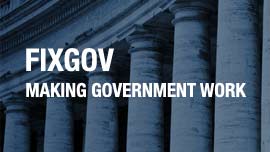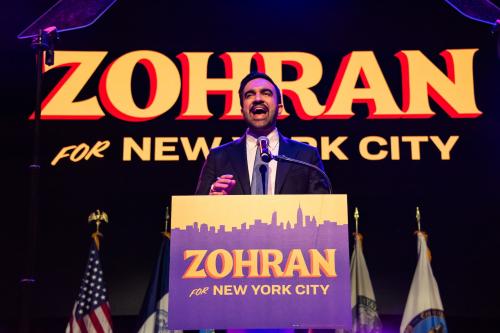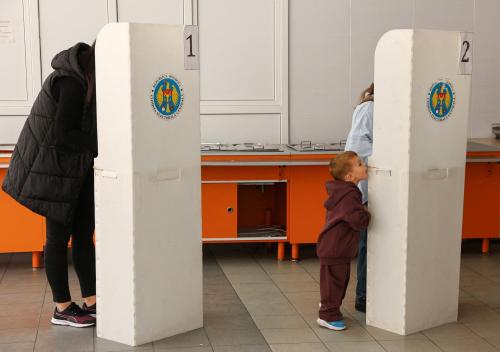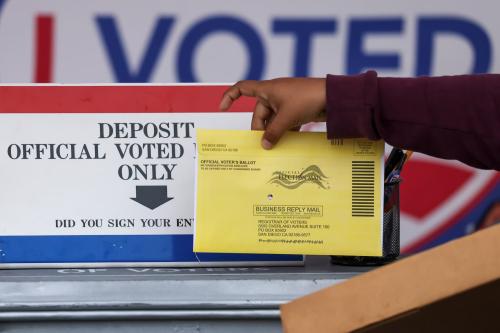Record-breaking protests have been a defining feature of both Trump presidencies. While the protests have been overwhelmingly peaceful, my research has been tracking how support for political violence by protest participants has grown during Trump’s second term—at least until the most recent round of anti-Trump protests in October.
Following the first No Kings Day of protest in June, “No Kings 2.0” attracted even greater attendance, with millions of people participating in events in over 2,700 locations across the United States. The organizing coalition for the event reported that it was one of the largest single days of protest in U.S. history.
Support for political violence at protests
To understand who is participating in this wave of protests against the second Trump administration, my research team has been collecting survey data from a random sample of participants at all of the large-scale demonstrations that have taken place in 2025. At the second No Kings Day in October, we collected data from 348 people as they rallied on Pennsylvania Avenue in Washington, D.C. (representing a 75% response rate). This methodology and sample size are consistent with the research studying protests. Participants in the protest were similar to those who joined previous anti-Trump demonstrations: They were predominantly female, white, highly educated, and had voted for the Democratic candidate in the most recent presidential election.
Although the demographic makeup of protesters continues to be consistent, one feature has changed remarkably over this year: Support for political violence.
Our survey includes a question that asks respondents to indicate their degree of agreement with the statement: “Because things have gotten so far off track, Americans may have to resort to violence to save our country.” Although the data we have collected over this first year of the second Trump administration had been showing a consistent upward trend in support for political violence, we observed a substantial drop at No Kings Day 2.0. Moreover, the proportion of the crowd who rejected political violence surged to 59%.
Our survey data cannot determine what caused the gradual growth and then abrupt decline in support for violence among protesters this year. It is worth noting that the second No Kings Day took place after a summer filled with high-profile acts of political violence against public officials. In June, a gunman fatally shot Minnesota Democratic lawmaker Melissa Hortman and her husband and wounded Democratic state Senator John Hoffman and his wife. Three months later, conservative activist and media figure Charlie Kirk was murdered.
In the wake of these heinous acts, political violence became a topic of heated national conversation. More importantly, the prospect of violence ceased to be an abstract or hypothetical concept and became a grisly reality. It is, perhaps, not a coincidence that after these real acts of violence, we see a significant decline in support for political violence in our surveys of protesters.
What do national surveys say?
In addition to surveying participants at large-scale protest events, we have been monitoring national sentiment through an annual survey that asks the same question to a nationally representative sample, which we administered two weeks before the November election. Data collection this year coincided with the days directly following No Kings Day 2.0. Our data show that support for political violence has held remarkably constant over the past year: Overall support was at 21% in 2024 and is at 20% this year.
When we break the data down by political ideology, however, there are notable differences over the past year: The 2025 data show that support for political violence by left-leaning Americans has gone up 9% to 26%, and support by right-leaning Americans has fallen by 12% to 17%. These patterns are similar to the findings from the American Values Survey, which asks a slightly different question.
A stated belief that political violence may be necessary is not a measure of intention to commit violence. Nevertheless, these findings provide some clear and chilling evidence about public sentiment regarding how well our democracy is working and how opinions have shifted. The fact that our data from the general public show higher support for violence among left-leaning individuals than we find from participants at progressive protests is also notable. This finding suggests that the people who choose to join peaceful protests may be using them as an outlet for their political dissatisfaction, rather than supporting the notion that political violence may be necessary to save our country.
It is also important to remember that, while political violence on the left outnumbers violence from the right in 2025, the actual levels remain much lower than historic periods of violence. Given these data, it is unclear where we are headed, but these large shifts in public sentiment should not be ignored.
The Brookings Institution is committed to quality, independence, and impact.
We are supported by a diverse array of funders. In line with our values and policies, each Brookings publication represents the sole views of its author(s).








Commentary
What the No Kings Day protest reveals about support for political violence in America
November 25, 2025